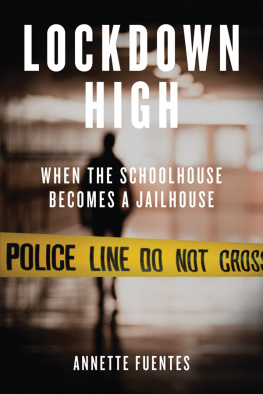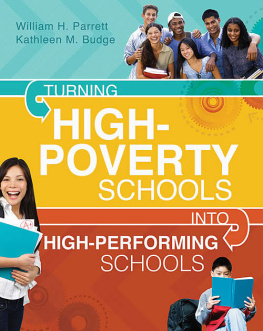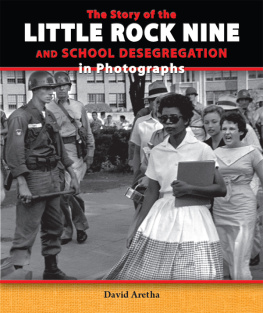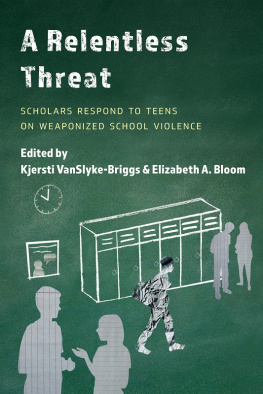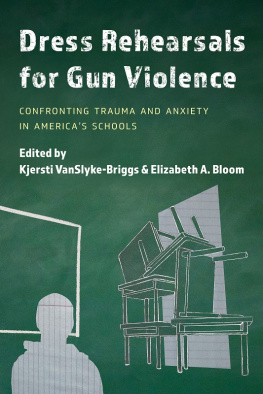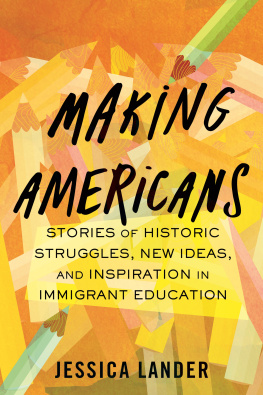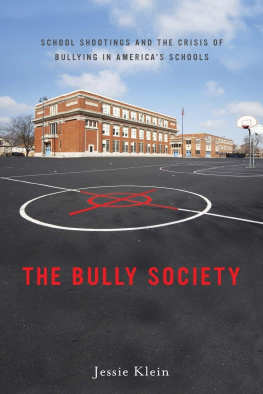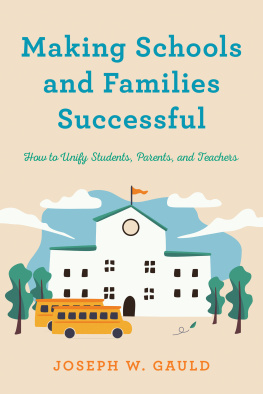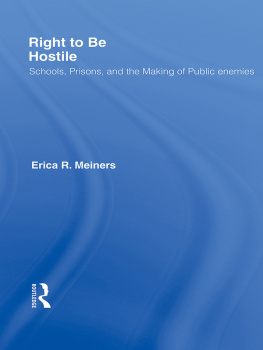
Lockdown High
When the Schoolhouse Becomes a Jailhouse
Annette Fuentes

CONTENTS
8 Busting Out of Lockdown High:
Alternative Paths to Safe Schools
Biko Edwards was an eleventh grader at Tilden High School in Brooklyn back in January 2007, and he made a little decision one day that had big consequences. He stayed after class to talk to his math teacher one morning and was a little late walking to chemistry class. The schools assistant principal for security, Val Lewis, blocked his way and ordered him to a detention room for being late. Edwards tried to explain why he was late and why he didnt want to miss chemistry, but Lewis would have none of it. I turned and went the opposite way, trying to walk to my class, Edwards said, and he called an officer to arrest me. A school cop arrived on the scene. Officer Rivera pulled me and slammed my head on a column in the middle of the doorway. I got a little dizzy. Then he sprayed me with Mace and called for backup, Edwards said, recounting his story three months later. Seven officers took the seventeen-year-old boy to jail, where he stayed for twenty-four hours and was booked on five charges. The school suspended him for four days. Instead of going to class, I end up in jail, he reflected.
The affluent Lower Merion School District in a Philadelphia suburb is known for its abundant student resources and high test scores. So when the district gave laptop computers to each of its 1,800 high schoolers as part of its technology initiative, everyone was pleased. But in November 2009, Harriton High student Blake J. Robbins was reprimanded by his assistant principal for improper behavior in his home. The Robbins family and the school community soon learned that the laptops webcams were secretly programmed to transmit what students or anyone else near the laptops were doingat school or at home. The family filed a class-action lawsuit against the school board and district superintendent, claiming violations of the Fourth Amendment, as well as illegal wiretapping and surveillance. In May 2010, a Philadelphia judge banned the district from such cybermonitoring. The district acknowledged it had snapped 56,000 screen shots from the laptops of forty students, an effort it said was meant to track missing laptops.
In Harrold, Texas, a sleepy farm town where the total student population for all grades is about one hundred and the crime rate is zero, the local school board decided in August 2008 that their teachers could come to school armed. Harrolds two dozen teachers now have the right to bear concealed handguns, an idea radical even in a state known for its embrace of gun rights. Although the new rule got no public vetting and parents were mostly in the dark about its passage, Superintendent David Thweatt said, Country people are take-care-of-yourself people. They are not under the illusion that the police are there to protect them. Not all parents share Thweatts attitude, though, or are reassured that teachers who chose to start the new school year with a bang, so to speak, took a forty-hour training class. The school board had considered other options, such as Mace, armed guards, and Tasers, as a precaution against another Columbine, although the towns schools had no history of violence.
The Mobile, Alabama, district attorney had a brainstorm: Why not create a computer database of public school students most likely to end up in prison? Why wait until after the kids get in trouble, when he could profile them before and treat them accordingly? In no time, the DA had fingered more than nine hundred students as potential criminals based on the number of days they were absent or times they were suspendeda small fraction of them had been suspended for having drugs or guns. The DA boasted to the press, I can tell you by name, address, and phone number the names of the future criminals of this countybefore they are in the juvenile justice system and before they are in the criminal justice system. Rationalizing his scheme, he insisted that the point was to connect the youth and their parents with social services to keep them on the straight and narrow. But he also admitted he would use the information to investigate crimescommitted by parents, too.
Savana Redding was an honor student in the eighth grade at Safford Middle School in Safford, Arizona, in October 2003. One day, she was pulled from a class because a classmate had told an assistant principal that Redding, then thirteen, had ibuprofen, a pain medication often used for menstrual cramps but among drugs the school had banned under its zero tolerance rules. What followed was a search by the male administrator and a female nurse who demanded that Redding pull open her bra and underwear to prove she had no hidden pills. No pills were found, but Reddings family filed a suit claiming the search violated her constitutional rights. In June 2009, the US Supreme Court ruled in her favor by eight to one.
Every day in communities across the United States, children and adolescents spend the majority of their waking hours in schools that increasingly have come to resemble places of detention more than places of learning. From metal detectors to drug tests, from increased policing to all-seeing electronic surveillance, the public schools of the twenty-first century reflect a society that has become fixated on crime, security, and violence. Although the fear of crime andsince September 11, 2001of terrorist acts is a fairly widespread malaise, the preoccupation with security and violence are particularly acute when it comes to children and teenagers.
In a strange paradox that is so American, children are considered both potential victims, vulnerable to dangers from every corner, and perpetrators of great violence and mayhem, demanding strict, preventive discipline. Its been said that one of the best measures of a societys development is the way it treats its children. By that measure, the United States has a long way to go, and at least part of the problem is that we are ambivalent about our kids. In 1997, at the height of a growing collective anxiety about young people and violence, the research and education group Public Agenda undertook to study the publics views of children and adolescents. Public Agendas starting point was that something is wrong with Americas kids, identifying such problems as poverty, rising drug use, and teen suicide, and violence in public schools. Its report, Kids These Days: What Americans Really Think About the Next Generation, portrayed an American public that was critical of, even hostile to younger peopleas if they were immigrants from another country invading and destroying true American values. Kids today are rude, irresponsible, and wild, according to two thirds of the survey group, and have a crisis of morals and values. Even young children received scathing criticism as obnoxious and spoiled and materialistic, and lacking respect for their elders. Perhaps the most depressing finding was that nearly 60 percent of the survey pool said that when the younger generation grows up, it will not make the world a better place, and might even make it worse.
In the late 1990s, my work as a journalist started pulling me toward reporting on education, youth, and juvenile justice. The kinds of widespread attitudes on display in the Public Agenda report were dramatically at odds with both my own interactions and experiences with children and teenagers living in New York City and with the true data on youth achievement and crime. I began noticing with greater frequency stories from newspapers all over the country that to my mind seemed freakish. A five-year-old being arrested for bringing a butter knife to school. A teenage girl suspended for bringing Midol to school for her menstrual cramps. A kindergartner suspended for having herbal cough drops that school administrators feared had illegal substances in them. Six-year-olds strip-searched in a classroom when a few dollars went missing from the teachers desk. These were the kinds of stories that in another time would have been relegated to the section on bizarre news, the infrequent and titillating man-bites-dog stories.
Next page
